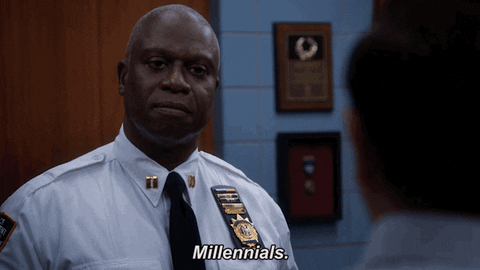HRforHumans: Be like Atreyu (Neverending Story reference) and pass through the gates of Workplace Flexibility
Sep 17, 2020 9:08 am
Hey !
What I’m reading: This is Marketing – Seth Godin
An incredible book. It feels like this is the legacy that one of the greatest marketers of our time wants to leave on the world. I started writing notes and quotes but had to stop because I filled up a notebook.
What I’m thinking: My desire to “change the world” has inspired me but has made me less effective. Instead, I need to focus on “starting a movement”.
Question I’m pondering: How can I simplify AND enjoy this?
Let me be clear: Workplace Flexibility will be one of the biggest shifts in the workplace since we started knocking down cubicles. It's happening whether we like it or not.
The hardest thing about Workplace Flexibility is overcoming the irrational fears and the mental barrier of “how it’s always been done”. The rest of it is actually really simple and can have an incredible impact on your company.
This week I was very grateful to spend an hour with the CEO of a large creative agency. The topic of conversation centred around the people challenges they’ve faced in 2020 and their priorities over the next 6-12 months. One part of the conversation really stuck out though:
ME: How is the transition back into the physical workplace going?
CEO: It’s going well, though we are having quite a bit of trouble getting the younger employees back into the office.
ME: That’s interesting, are they worried about safety in the office or on public transport?
CEO: No. I think they’d just prefer to avoid the commute. And they like the fact that they can head out to the gym or go for a surf whenever they want to and then come back and do their work later.
ME:

CEO: We are doing everything we can to get them back in here, but you can’t really force them with everything that’s going on.
ME: Yeah right. So, are you worried that they aren’t working?
CEO: No, actually I’ve been surprised with how committed our people have been during the office shutdown.
ME: OK… did you notice a drop in productivity during the lockdown period?
CEO: Not really. We had a dip at the start, but once we got everyone set up, we’ve actually worked really well.
(You see where I’m going here right?)
ME: That’s good. So, with everyone unable to get together, did the quality of the work suffer?
CEO: Ha… no. I think the Creatives actually enjoyed the peace and quiet, and not having someone looking over their shoulders constantly. We actually managed to win some new clients as well.
ME:

ME: If your employees are just as productive (during some of the toughest working conditions in the past 50 years), they are creating higher quality work and they are happier not being in the office all week, WHY do you want them back here?
CEO: It’s just easier for me to do my job if I can just walk up and talk to them at their desks.
I could see that the penny had dropped, but unfortunately it bounced off some very hard ground (i.e. decades of ingrained “how it’s always been done” thinking and fear of what might happen if flexibility is embraced).
Now, he was gracious enough to give me an hour of his time, and I was there to pick his brain, not sell him some workplace flexibility solution, so I didn’t push him too hard on changing his thinking.
So, just in case he is reading this, or you’ve come across people with similar attitudes, below is a breakdown of WHY flexibility is important and HOW you can quickly and easily create flexibility in your workplace:
WHY FLEXIBILITY IS IMPORTANT?
Increased productivity. Increase in the quality and effectiveness of communication and collaboration (Yes... increase), Increased employee engagement. Improved mental wellbeing. Increased employee retention. Increased ability to attract new talent. Fewer sick days. Potential to lower overheads... the list goes on.
So here are 10 simple steps to flexibility:

- Accept that things have changed. The future of the workplace, which was expected to take place over the next decade, is happening NOW. There will be businesses that thrive as a result of this change and there will be businesses that fall behind (or fold).
- Identify your own prejudices, your fears, the “security blanket” of how it’s always been done, then interrogate them. What do you think or feel when you start contemplating what flexibility could mean for your workplace?
- Tell your employees that you want to create a truly flexible workplace, then ask them “how could we be truly flexible and be MORE productive/profitable than we were before?”. Make them accountable for the success.
- Identify the times where people MUST be in the office. For example, important client meetings, all-company updates, brainstorming sessions… whatever it is for your company.
- DON’T write a policy! Instead, be flexible with flexibility. Set clear expectations about the standards of service to clients, the quality of work, the level of productivity and the type of culture you want to have and how you will measure this, then communicate them…
- Trial it for 3 months.
- Leaders must model it.
- Seek feedback – celebrate successes. Share challenges (no matter how small).
- Iterate and...
- Repeat.
The path to workplace flexibility is not complex, but, just like when Atreyu approached the Sphinxes' Gate on his way to find the Oracle, it requires you to understand and move past your own fears in order to succeed.
If you don't get this reference... here is a link. Or you should rewatch Neverending Story. Brilliant, brilliant movie.
Until next week work nerds!
Clint
